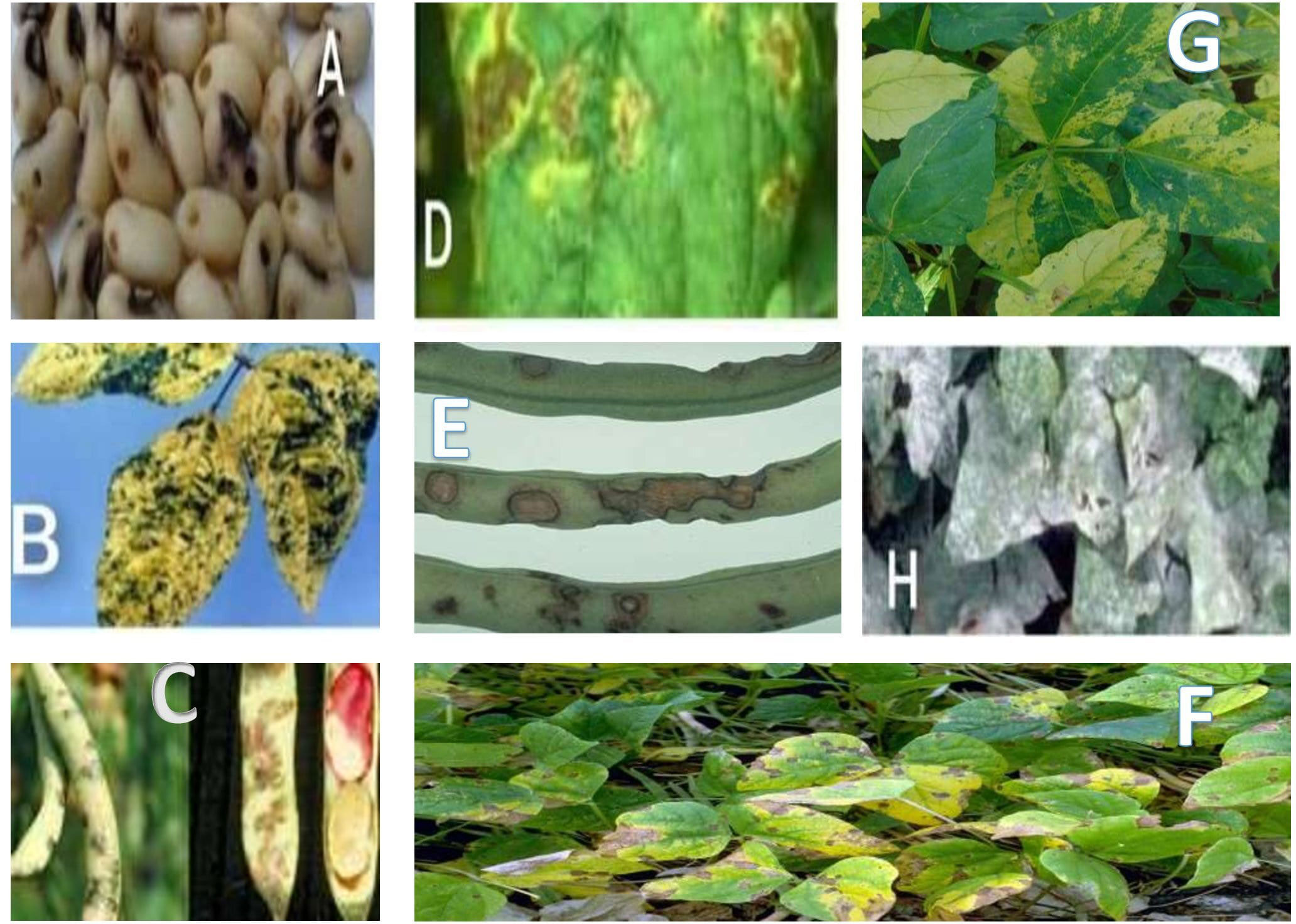
94% of researchers rate our articles as excellent or good
Learn more about the work of our research integrity team to safeguard the quality of each article we publish.
Find out more
CORRECTION article
Front. Plant Sci., 06 October 2022
Sec. Plant Breeding
Volume 13 - 2022 | https://doi.org/10.3389/fpls.2022.1042678
This article is a correction to:
Constraints and Prospects of Improving Cowpea Productivity to Ensure Food, Nutritional Security and Environmental Sustainability
 Olawale Israel Omomowo
Olawale Israel Omomowo Olubukola Oluranti Babalola*
Olubukola Oluranti Babalola*A Corrigendum on
Constraints and prospects of improving cowpea productivity to ensure food, nutritional security and environmental sustainability
by Omomowo OI and Babalola OO (2021) Front. Plant Sci. 12:751731. doi: 10.3389/fpls.2021.751731
In the published article, there was an error in Figure 1 as published. There was an error during the stage of joining the pictures A to G together.

Figure 1 Microbial diseases of cowpea: (A) cowpea seed beetle, (B) Yellow mosaic virus infected cowpea, (C) cowpea halo blight, (D) bacterial blight, (E) anthracnose, (F) cowpea cercospora leaf spot, (G) cowpea severe mosaic virus, (H) powdery mildew.
The authors apologize for this error and state that this does not change the scientific conclusions of the article in any way. The original article has been updated.
All claims expressed in this article are solely those of the authors and do not necessarily represent those of their affiliated organizations, or those of the publisher, the editors and the reviewers. Any product that may be evaluated in this article, or claim that may be made by its manufacturer, is not guaranteed or endorsed by the publisher.
Keywords: cowpea productivity enhancement, indigenous legume, Vigna unguiculata, nutritious human food, the largest producer status, smart biotechnological approaches, protein-rich fodder-for livestock
Citation: Omomowo OI and Babalola OO (2022) Corrigendum: Constraints and prospects of improving cowpea productivity to ensure food, nutritional security and environmental sustainability. Front. Plant Sci. 13:1042678. doi: 10.3389/fpls.2022.1042678
Received: 12 September 2022; Accepted: 21 September 2022;
Published: 06 October 2022.
Edited and Reviewed by:
Aditya Pratap, Indian Institute of Pulses Research (ICAR), IndiaCopyright © 2022 Omomowo and Babalola. This is an open-access article distributed under the terms of the Creative Commons Attribution License (CC BY). The use, distribution or reproduction in other forums is permitted, provided the original author(s) and the copyright owner(s) are credited and that the original publication in this journal is cited, in accordance with accepted academic practice. No use, distribution or reproduction is permitted which does not comply with these terms.
*Correspondence: Olubukola Oluranti Babalola T2x1YnVrb2xhLkJhYmFsb2xhQG53dS5hYy56YQ==
Disclaimer: All claims expressed in this article are solely those of the authors and do not necessarily represent those of their affiliated organizations, or those of the publisher, the editors and the reviewers. Any product that may be evaluated in this article or claim that may be made by its manufacturer is not guaranteed or endorsed by the publisher.
Research integrity at Frontiers

Learn more about the work of our research integrity team to safeguard the quality of each article we publish.